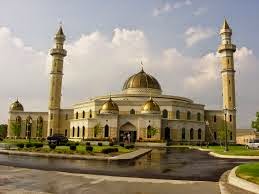Understanding the Dispute at the Islamic Center of America: Excerpts from Liyakat Nathani Takim's book Shi'ism in America
 |
| Islamic Center of America |
Understanding the Dispute at The Islamic Center of America: Helpful Excerpts from Liyakat Nathani Takim's book Shi'ism in America
The Islamic Center of
America is in the news due to the dispute between the board and its imam Hassan
Qazwini.
There is nothing
exceptional or suis generis in the ongoing dispute. Issues of ethnicity,
finances, “mosque politics” all help understand the dispute.
One academic work that helps one understand the dispute is Liyakat Nathani Takim's book Shi'ism in
America. Below are excerpts from his book:
Page
55:
Most
Shi’i immigrants try to impose the homeland culture in America by determining
how the mosques are run, or what is an acceptable dress code, language, and
behavior. Newer immigrants also tend to have their own predispositions on
issues such as gender integration, political activism in a non-Muslim country,
engagement with different ethnic groups, interfaith dialogue, joint activity
with Sunnis, and the like. In many cases, Shi’i immigrants tend to emphasize
the public expression of their religious beliefs and practices and are thus
less likely to assimilate.
Immigrants
also challenge the American expression of Islam, precipitating a crisis and
even splits within certain mosques. They bring with them a more intense form of
Shi’ism, one whose discourse is frequently more aggressive and polemic,
reasserting thereby the traditional demarcating lines between Shi’ism and Sunnism.
Thus, immigration has enhanced tensions between the Sunnis and Shi’is who come
from a different culture. As they try to impose a homogenized, monolithic
Shi’ism in America, immigrant Shi’ism is also challenged by the youth in the
community. According to Najjah Bazzy, a prominent member of the Islamic Center
of America in Dearborn, the Iraqis brought with them an intense form of Shi’ism
and expression of devotion to the family of the Prophet and have impacted the
Lebanese community who relinquished some of their religious laxity and became
more strict. More specifically, she notes, the Iraqis carried to the States the
intensity of ‘Ashura’. The Lebanese
were too lax; the Iraqis, on the other hand, were too stringent, leading to
much altercation between the two groups. Due to such disparities, there has
been considerable resistance to the Iraqi presence in some Lebanese centers in
Dearborn.
Page
58:
In Dearborn, the
Islamic Center of America is frequented primarily by the Lebanese. Within a few
miles lies the Kerbala Center, which was established in 1995 to cater
especially to the Iraqis. In my discussions with them, a few members of the
Lebanese community in Dearborn restated the view that the relationship with the
Iraqis in Dearborn was not very strong; in fact, there was some resistance to
the Iraqi presence at the Islamic Center of America. Shaykh Hisham Husainy of
the Kerbala Center in Dearborn admitted that a cultural chasm existed between
the Lebanese and Iraqi Shi’is. The former, he observed, are more lax and do not
observe a rigid interpretation of Islam. According to him, only a few Lebanese
frequent the Kerbala Center.
Page
61:
The ethnic division
dissipates in communities where Shi’is of different ethnic and cultural
backgrounds come together to share limited resources and form multiethnic
centers. In communities like Cleveland, Indianapolis, Seattle, Nashville,
Phoenix, and Austin, the ethnic divide is almost nonexistent as different ethnic
Shi’i groups coalesce under the common banner of the prophet and his progeny.
Others may even hold joint religious programs with local Sunni communities.
However, even in such multiethnic centers, there is much tension as different
groups try to impose their peculiar understanding and articulation of Shi’ism.
Occasionally there are disputes regarding which speakers to invite, what kind
of food to serve, whether men and women should be seated in the same hall,
whether and how to perform acts of flagellations, and the like. I observed much
tension in one center engendered by a debate as to whether tabarri’ (which was understood by some to refer to the explicit
cursing of the enemies of the ahl al-bayt),
was to be undertaken during the programs or not. Some clearly felt that the
center should replicate the old tradition of cursing the enemies of the family
of the prophet whereas other members favored accentuating the more positive tawalli (stressing the virtues and
following the examples of the prophet and his family)



Comments